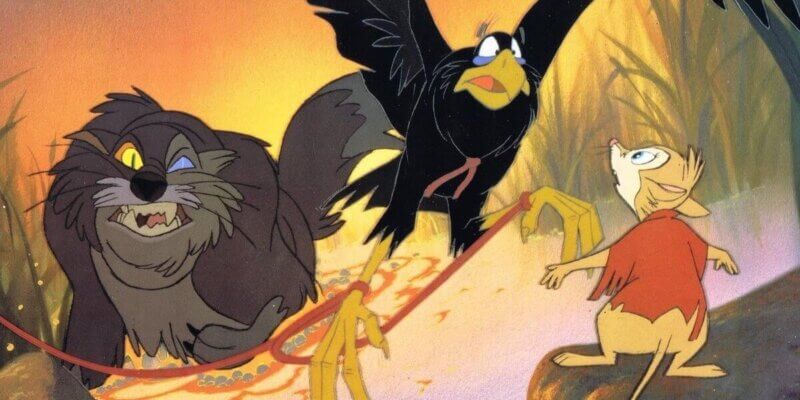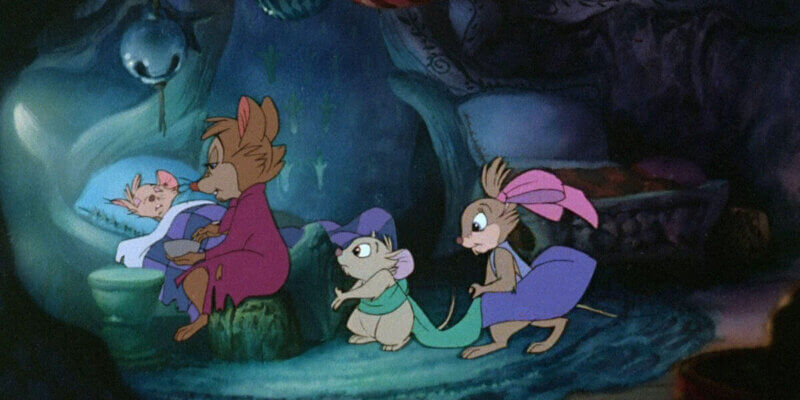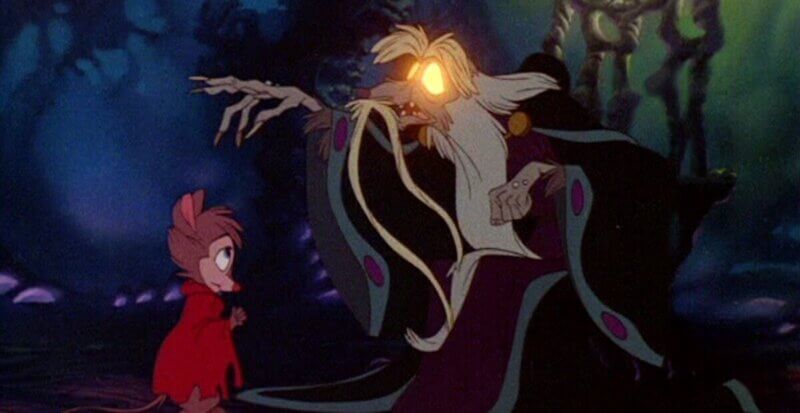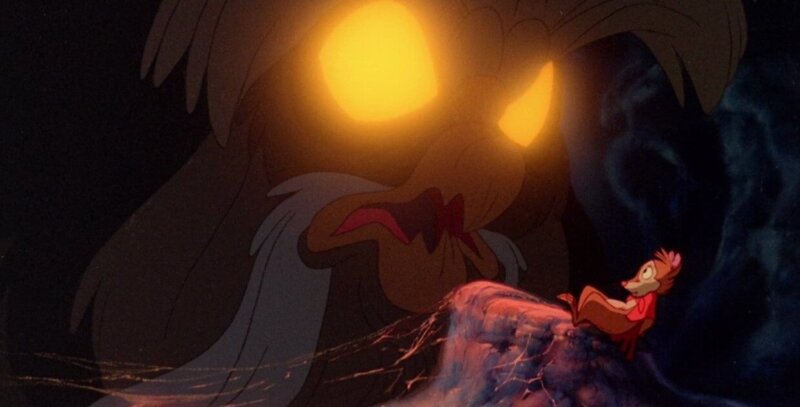The Secret of NIMH: 40 Years Of Don Bluth’s Magic

This year marks the 40th anniversary of legendary animator Don Bluth‘s first feature-length animated film: The Secret of NIMH. Starring a cast of anthropomorphized animals living on a farmer’s field, the story tells of the brave widowed mouse Mrs. Brisby as she tries to seek help from the rats to move her children to safety before the farmer can plow their home away.
If it wasn’t for this film and the hard work of everyone involved, traditional animation and the impact on the industry for years to come would probably never be the same. So let’s look at the history of Bluth’s career, his associates, and how they would create this beloved cult classic.
Between 1971 to 1979, Don Bluth returned to Walt Disney Studios as an animator after briefly working at the studio in 1956 when he was just eighteen years old. During his eight years working at the studio throughout the 1970s, Bluth worked on animated features that would eventually become classics like Robin Hood and The Rescuers.
But during the production of The Fox and the Hound, Bluth and several other animators were starting to feel ignored by their ideas towards the animated features and wanted to grow within the studio. He and, then Disney animator Ken Anderson, wanted Disney to adapt Robert C O’Brien’s book Mrs. Frisby and the Rats of NIMH, but the studio turned Bluth down.

Tired of being shackled from exploring other creative avenues within the studio, Bluth left with other animators in the middle of the production, including Gary Goldman and John Pomeroy. Not only was this his last film associated with the studio, but it would cause a massive delay in the production of The Fox and the Hound. The reason behind his decision to leave, according to Bluth in an interview with Cinfantastique in 1982:
“D-(for Disney) Day. It got to be that we couldn’t be creative in the true sense of the word. The red tape, the bureaucracy, the chain of authority — everywhere you turned, someone was saying, ‘we don’t do that at Disney,’ or ‘that isn’t what Walt would have wanted.’ When we realized how difficult it was to grow in those confines, we decided to leave the organization.”
Now on his own two feet, Bluth was able to form a brand new independent studio named Don Bluth Productions, with Gary Goldman and John Pomeroy becoming his partners. With the freedom to experiment, they invested in new equipment to play with animation with the creative freedom they desired. They also wanted to test the old technical skills used for Disney’s first theatrical classics like Fantasia and Snow White. This ranged from scintillating lights to rotoscoping to xeroxing cels, and they also used modern technology at the time like early computers to create some psychedelic effects that would eventually be incorporated into the film.
After Disney turned down the opportunity to adapt Mrs. Frisby and the Rats of NIMH, Bluth knew what their first film would be. While science fiction writer Steven Barnes attempted to write a synopsis for the film and change elements of the original story for the adaptation, Bluth eventually took over the story and he and his team changed it as they worked on one scene at a time, starting the intense process for the entire team to get the film made and released on time.
From the start of the production, Bluth and the team had a large obstacle ahead of them. While Aurora Productions co-produced and financed it with a $7 million budget, it was only 25% less than what Disney would spend to produce their animated features in the 1980s. Furthermore, they had only thirty months to make it before the 2nd July 1982 release date, which was half the time that Disney would take to animate their films at the time.

But during this short timeframe, however, everyone would learn a lot from each other and those that would eventually join their venture in the production. Comedic actor Dom DeLuise would teach Bluth, Goldman, and Pomeroy about comedic timing while he performed improvised and written lines for Jeremy the clumsy crow. And composer Jerry Goldsmith would learn the intense process for his first animated feature as he mostly worked with unfinished sequences, daily rushes, and story sketches to score the film.
And as for Don Bluth, his pursuit to learn and lead a team of animators saw him with his own fair share of challenges too. Despite fourteen other animators making up his team, he storyboarded the entire film and would take charge of a lot of elements of the animation including creating the layouts. His deep involvement in the film even saw him animating the climactic fight between the rats Justin and Jenner. But he alongside his partners and several other team members would work between 6 am to 11 pm in the last six months of production in order to get the film completed. And Gary Goldman can attest to that, as he discussed the hard work that they put into it within the same 1982 interview in Cinfantastique:
That’s why you’ll find Don and John and myself the first ones here in the morning and the last ones to leave at night. We’re running hard, and we want everyone else to run hard.
The film ended up with 65,000 feet of film reel, 1,000 paintings used specifically for the backgrounds from it, and at least 120,000 drawings. Aurora Productions would put $4.4 million into the marketing for the film and expected United Artists to help get the film released in many cinemas. Before the film’s release, United Artists and Bluth Productions made newsletters to promote it and they branded it as the second age of animation before its release on 2nd July 1982.
Despite the newsletters’ attempts as well as the film’s advertising, it had two stiff obstacles to come over that would impact its theatrical performance. The first was that United Artists opened up in approximately 100 cinemas and would slowly build up the numbers each week as part of a roll-out campaign before it was eventually released in 670 theatres. The second was that it competed with the summer’s biggest releases, including Steven Spielberg’s E.T, which would become one of the most celebrated family films of all time. Despite being outperformed by this and other theatrical releases, it did well enough to place in 3rd place at each cinema it was screened at.
By the end of its first month, it only garnered $5 million at the box office and by the end of its theatrical run, it grossed around $12 million. While it wasn’t the most successful film that summer, it did really well within the video market and saw it reach Gold status with its VHS sales, and was a popular film to rent. It did receive a re-released version in 1990 with a remaster and a $20 price tag compared to the original release’s $79. With a new advertisement campaign and fresh critics praising it, the film managed to find some success in the 1990s as a cult classic.

Today, many would associate Don Bluth with the films that came after The Secret of NIMH before thinking or being aware of the existence of this film. But its legacy is the films that Bluth continued to create alongside his team and the skills they continued to develop that saw the likes of The Land Before Time, All Dogs Go To Heaven, and An American Tail so fondly remembered by children growing up in the 1980s and 1990s.
But it was also one of the key films responsible for re-igniting passionate Disney productions with fresh talent that gave birth to The Disney Renaissance. As Bluth, Goldman, and Pomeroy were young and ambitious, so too were the new and emerging talents behind Beauty and the Beast and The Little Mermaid that saw Disney creating some truly inspired animation and storytelling between the 80s and 90s. As stated by Gary Goldman in an interview for Traditional Animation that celebrated the film’s 30th anniversary:
Sounds a bit over-confident, even arrogant, but at the time we meant it with great sincerity. However, I hear so often from friends in the industry that our departure from Disney, the fruit of our efforts, and because that film made a huge impact and helped usher in the renaissance, a second golden age of animation in the eighties and nineties. In a way, it was a huge sacrifice to make the point. But, it’s been worth it. Especially, the fact that the film seems to hold up after all these years.
Whether you’re a fan of Don Bluth or unfamiliar with his work, The Secret of NIMH remains one of his most important pieces of work, but more importantly, one of his best too.


